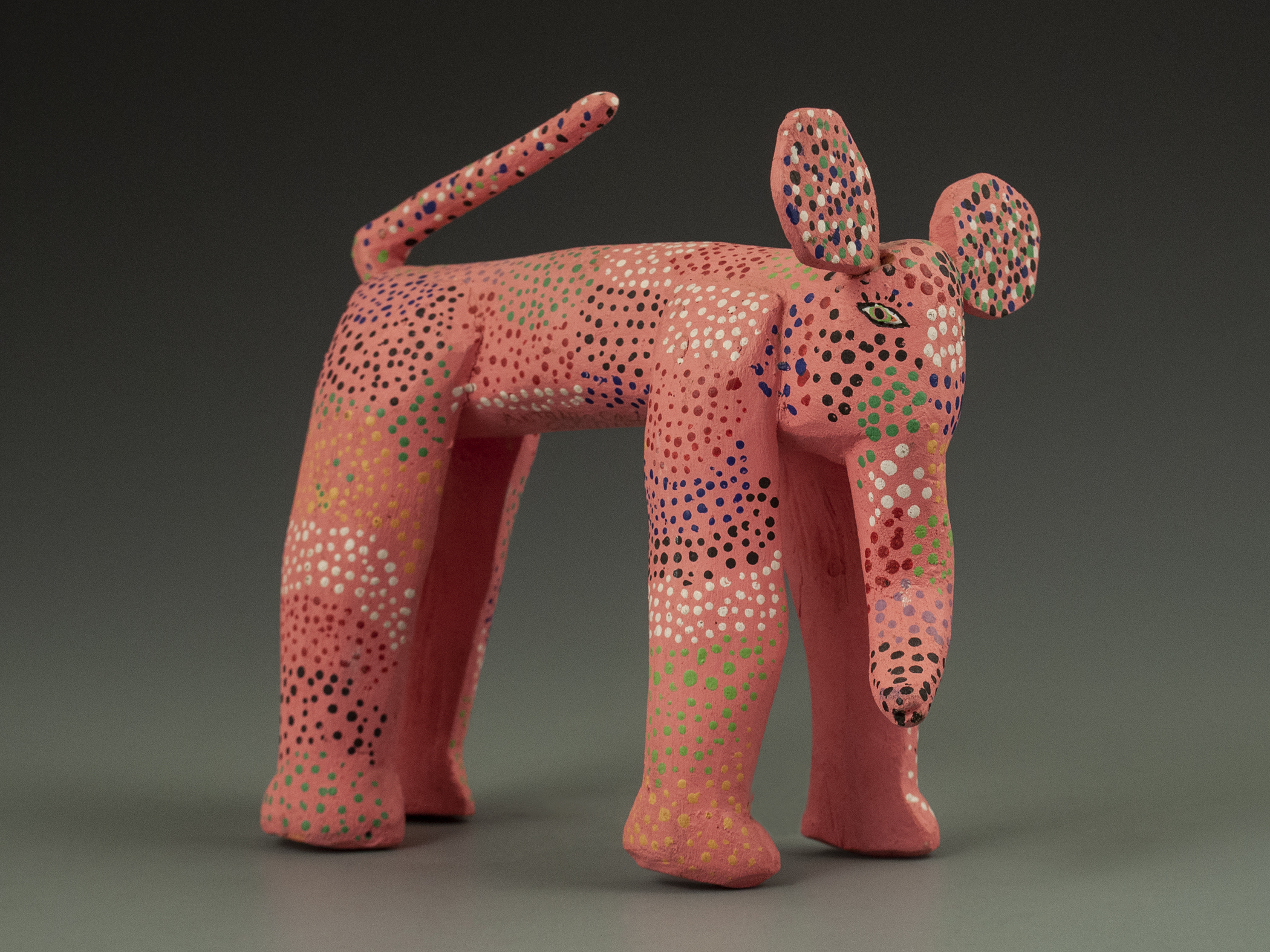Pink Wooden Elephant
Oaxaca, 1988

Guelaguetza means “to give a gift without expecting anything in return.” Oaxaca’s annual Guelaguetza festival is held on two consecutive Mondays in late July. Tribal groups from all over Mexico mass in the city’s open stadium. They sing traditional songs, dance traditional dances, and throw gifts to the maniacal capacity crowd. Sometimes the objects are small: limes, tamales, packets of coffee or chilies. But just as often they are enormous, and potentially deadly: pineapples, papayas, and coconuts, catapulted into the stands.
The Guelaguetza took its present form in 1932. It descends from the Aztec Lunes del Cerro, during which a virgin was sacrificed to the goddess of corn. The dispensing of gifts to a crowd is almost as ancient. I read this in the fiesta’s program:
The lords and nobles gathered and gave food to men and women, large and small, for eight continuous days before the festival. At noon everyone received as many tamales as they could hold in one hand.”
How many tamales can a person hold in one hand? I think I could manage six, if I palmed three and then built a little pyramid—but given a few weeks of practice, who knows what might be possible?
In 1988 I was on assignment at Oaxaca’s Guelaguetza, shooting pictures like mad. At one point I reached behind me into my photo bag, only to discover my zoom lens had been stolen.
Though I shrugged off the loss, Polo, my young local guide, was crestfallen—to the point where I thought he would cry. Oaxaqueños are honest people, he insisted, but pickpockets and other thieves come down from Mexico City to exploit the event and rob merrymakers.
When the festival ended I led Polo into the craft market and, to show my unflagging love of Oaxaca, bought this pink alibrije elephant. The ears and tail come off, for easy transport. You may have it; I ask nothing in return.
